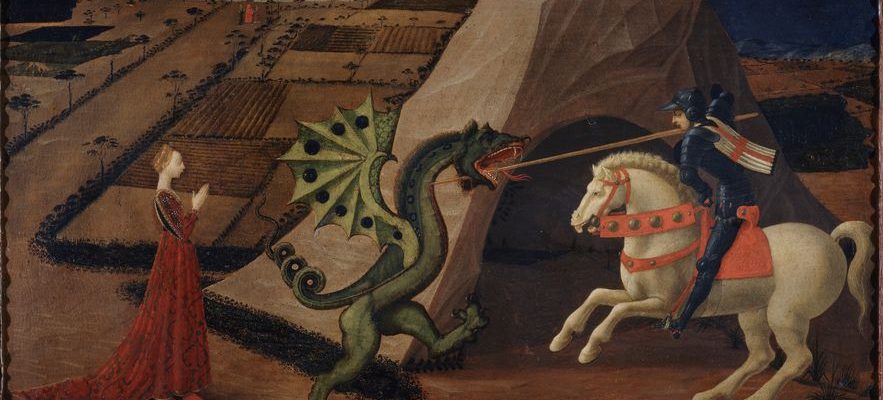Soft toys, figurines, pajamas or creative games on a candy pink background, little girls’ toys bearing the image of the unicorn have never been so trendy in the 2020 decade. A sort of obvious fact when we know that this “magical companion for the little dreamers” of today symbolized purity in the Middle Ages, the animal only allowing itself to be approached by virgins and reserving its sting for hunters. An ode to virginity during the Renaissance, we find the creature in the 19th century, as in this watercolor by Gustave Moreau, where the orange tree to the right of the frame recalls the crown of white flowers coming from the shrub that the young brides. Like other hybrids and supernatural creatures, whose legend emerges in Prehistory and asserts its presence since Antiquity, the unicorn will subsequently populate the iconography of fantasy and popular culture.
Where do these figures with supernatural power come from, whose physical characteristics sometimes connect them to the human world? What is the meaning of these monsters, which have always inspired artists and occupy our collective unconscious, between fear and fascination? This is the question to which the Louvre-Lens attempts to answer in the exhibition Fantastic animals visible until January 15. Hélène Bouillon, the curator, who has been working on the subject for six years, narrowed her remarks around a handful of creatures, selected from the multiple representatives of this improbable fauna, bringing together 250 works on the museum’s walls: sculptures , paintings, works of art, but also cinema and music. If we regret that the scenography lacks pep, the theme giving hope for a more “animated” journey, the richness and the essential decryption are there.
“Saint George fighting the dragon”, by Paolo Uccello, circa 1440. Tempera on wood.
/ © RMN-Grand Palais
The same goes for the unmissable dragon, “the fantastic animal par excellence”, which is given a dedicated room here. Having become sympathetic at the end of the 20th century, notably through the 7th art, the mythical animal was once formidable, mushkhoushshou (pronounced “mouchrouchou”) Mesopotamian, to the Rainbow Serpent from West Africa, passing through Quetzalcoatl Mexican. Later, it is fought on the canvas, as we find in the Saint George slaying the dragon by Paolo Uccello (1444), or, closer to us, on the covers of comics (both of us Rahan!), even current, as evidenced by the superb Unicorn in tapestry and porcelain by the visual artist Nicolas Buffe, on loan from Aubusson.
At the center of the struggles between opposing forces, primarily those of good and evil, the members of this fantastic bestiary are often associated with the idea of magic. They are attributed with healing and protective powers like, in Mesopotamia, the Pazuzucovered with scales and equipped with a scorpion’s tail, supposed to ward off bad luck, or, in China, from Fenghuangphoenix which acts as guardian of sacred places and celestial messenger.

Wall lamp in the shape of “Fenghuang”.
/ © Departmental Museum of Asian Arts / Laurent Sully Jaulmes
If the modern era has gradually seen these fantastic animals erased from geographical maps and stripped of all reality to join the realm of fiction and poetry, they nonetheless remain omnipresent figures of pop culture, which says a lot about their “narrative, symbolic and timeless power”, underlines Hélène Bouillon. Why such longevity? The curator has her idea: “These fabulous creatures respond to a need that is more relevant than ever: to re-enchant our world.”
